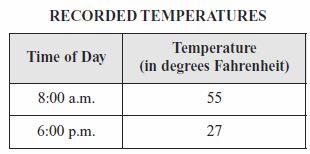General Information
Test Item Specifications
- Given data about sharks and the amount of food they eat, students will be able to solve for the unknown in percentage problems.
- Given information about a shark's growth, students will be able to graph coordinates and interpret a linear graph.
- Given the conversion factor, students will be able to convert from metric to English units.
Students will solve single- or multi-step percent problems, including problems involving discounts, simple interest, taxes, tips, and percents of increase or decrease, using appropriate computations and rounding strategies where appropriate.
Items may include solving for the whole, the part, or the percent.
Percents greater than 100 should be in multiples of 10 or 25, up to 300.
Percents less than 100 should be whole numbers or mixed numbers, which can be written in decimal form (e.g., 3 1/2% as 3.5%).
Items may require the student to round answers to the nearest whole number, dollar, cent, percent, or other amount, as appropriate.
All items should be set in a real-world context.
Sample Test Items (2)
| Test Item # | Question | Difficulty | Type |
| Sample Item 1 | Mario studied the temperature changes that occur when cold fronts pass through a region. One day, he recorded the temperature in the morning and again after a cold front passed through in the afternoon.
Which is closest to the percent of decrease in these temperatures? |
N/A | MC: Multiple Choice |
| Sample Item 2 | In August, Music Maze priced all the compact discs (CDs) at $10. In October, these same CDs were discounted 50%, and in December they were reduced an additional 25%. What was the price of one CD after both discounts? | N/A | GR: Gridded-Response |
Related Resources
Lesson Plans
| Name | Description |
| Real Life Tax, Tip, and Discount! | Students calculate the tax, tip, and discount in real-world situations. |
| Pricing Twelve Days of Celebration | Students will discover how much items would cost if they were to give gifts for 12 days. They will learn how to calculate and add sales tax to find a total. |
| Here's a tip! | Students will solve problems involving sales tax and tips; students will apply the properties of operations with numbers in decimal, percent, and fraction form. Students will convert between numbers in any form as appropriate. |
| Let's Go Shopping: Calculating Percents | In this lesson, students will participate in a simulated shopping experience where they choose items they would like to purchase from local sale advertisements. The students will be able to apply the percent formula and the percent of change formula to real world financial situations. Students will learn how to calculate percent discounts, their percent of savings, and tax. The students will analyze, compare, draw conclusions and explain in writing why specific types of discounts are the most advantageous given specific situations. |
Teaching Idea
| Name | Description |
| Calculating Sharks-SeaWorld Classroom Activity | |
Tutorial
| Name | Description |
| Using the Proportion Method to Solve Percent Problems | This site explicitly outlines the steps for using the proportion method to solve three different kinds of percent problems. It also includes sample problems for practice determining the part, the whole or the percent. |
Unit/Lesson Sequence
| Name | Description |
| Percents: What's the Use? | This activity focuses on the use of percents in situations involving discounts and taxes. The students are assigned an interview to discover the use of percents in various careers. Working in pairs and using shopping catalogues, they will further their knowledge of percents by calculating discounts and taxes. To access their knowledge of percents, there is a writing activity and an assignment to create a menu with questions and an answer key. |
Student Resources
Tutorial
| Name | Description |
| Using the Proportion Method to Solve Percent Problems: | This site explicitly outlines the steps for using the proportion method to solve three different kinds of percent problems. It also includes sample problems for practice determining the part, the whole or the percent. |

